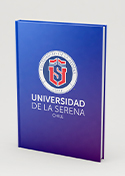Browsing by Author "Weideman Craig"
Effects of land cover and habitat condition on the bird community along a gradient of agricultural development within an arid watershed of Chile
(2023/10/15) Petit Mariangeles; Celis Cristian; Weideman Craig; Gouin Nicolas; Bertin Angeline
Agricultural activities are a major cause of change in avifauna, frequently resulting in diminished diversity and biotic homogenization, and ultimately compromising ecosystem functioning and resilience. Arid ecosystems, which provide habitat for numerous native and endemic bird species, are vulnerable to global change and valuable in predicting future ecosystem shifts in regions undergoing aridification as a result of climate change. However, the impacts of agriculture on bird communities in arid ecosystems are understudied. Here, we evaluate these impacts in the arid Limari watershed in north-central Chile, a region that has experienced extensive land use conversion to agriculture over the past 50 years. Specifically, we investigated current spatial patterns of avian beta diversity and the impact of landscape context on this diversity facet. Moreover, we evaluated how bird species respond to land cover and habitat conditions and the role of specific bird traits in this regard. To achieve this, we evaluated taxonomic and functional beta diversity across 26 sites distributed along a gradient of agricultural development, applied a beta diversity decomposition procedure, and carried out hierarchical joint species distribution modeling. Our study revealed high taxonomic but low functional beta diversity of the avifauna in the Limari watershed, potentially indicative of past functional homogenization. Contrary to our initial expectations, present agricultural practices did not decrease beta diversity. While human-related landscape elements and agricultural features mostly had neutral or positive effects on bird occurrence, they negatively affected endemic species and certain bird traits related to diet and habitat. Riparian vegetation cover and quality, unrelated to agricultural and urban development, emerged as key factors structuring the regional bird community, and influenced beta diversity. Our results underscore the profound influence of land use change on the avian community in this arid region and the vital role of riparian ecosystems in this regard. Balancing conservation objectives with agricultural development is key to ensuring both the persistence of several functional groups in the region as well as the ecosystem services they provide.
Effects of land cover and habitat condition on the bird community along a gradient of agricultural development within an arid watershed of Chile
(2023/10/15) Petit Mariangeles; Celis Cristian; Weideman Craig; Gouin Nicolas; Bertin Angeline
Agricultural activities are a major cause of change in avifauna, frequently resulting in diminished diversity and biotic homogenization, and ultimately compromising ecosystem functioning and resilience. Arid ecosystems, which provide habitat for numerous native and endemic bird species, are vulnerable to global change and valuable in predicting future ecosystem shifts in regions undergoing aridification as a result of climate change. However, the impacts of agriculture on bird communities in arid ecosystems are understudied. Here, we evaluate these impacts in the arid Limari watershed in north-central Chile, a region that has experienced extensive land use conversion to agriculture over the past 50 years. Specifically, we investigated current spatial patterns of avian beta diversity and the impact of landscape context on this diversity facet. Moreover, we evaluated how bird species respond to land cover and habitat conditions and the role of specific bird traits in this regard. To achieve this, we evaluated taxonomic and functional beta diversity across 26 sites distributed along a gradient of agricultural development, applied a beta diversity decomposition procedure, and carried out hierarchical joint species distribution modeling. Our study revealed high taxonomic but low functional beta diversity of the avifauna in the Limari watershed, potentially indicative of past functional homogenization. Contrary to our initial expectations, present agricultural practices did not decrease beta diversity. While human-related landscape elements and agricultural features mostly had neutral or positive effects on bird occurrence, they negatively affected endemic species and certain bird traits related to diet and habitat. Riparian vegetation cover and quality, unrelated to agricultural and urban development, emerged as key factors structuring the regional bird community, and influenced beta diversity. Our results underscore the profound influence of land use change on the avian community in this arid region and the vital role of riparian ecosystems in this regard. Balancing conservation objectives with agricultural development is key to ensuring both the persistence of several functional groups in the region as well as the ecosystem services they provide.
